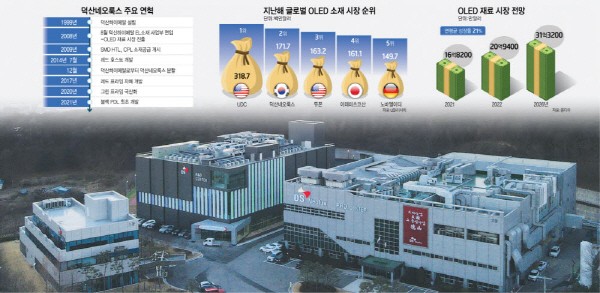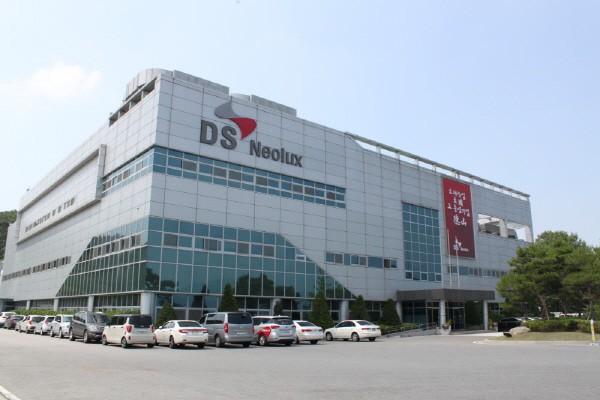

DS Neolux is speeding up the development of next-generation display materials. As an organic light emitting diode (OLED) material company, DS Neolux is expanding its fields in non-light emitting materials and high value products such as black PDL and QD materials. Surpassing US’ DuPont last year, DS Neolux became the world's second-largest OLED material manufacturer. DS Neolux continues to grow to become a next-generation display material company with experiences from developing OLED materials.
For the first time in the world, DS Neolux developed a new OLED material, Black PDL. It will be first applied to Samsung's new Galaxy Z Fold 3. Black PDL controls red, green, and blue pixels in the organic light emitting layer so that they do not interfere with each other, and dramatically reduces power consumption in OLED displays. The thickness was greatly reduced by removing a polarizing film, and the power consumption was increased by 25%. DS Neolux preemptively developed a material monopolized by Japan’s Toray, and successfully mass-produced the product. Although Black PDL is applied to the Galaxy Fold series in a limited way, DS Neolux plans to expand the supply of products to various applications in the future.
DS Neolux also plans to develop quantum dot (QD) display materials, and expand the product lineup of next-generation display materials. It has been developing QD materials for six years, and is enhancing product development in cooperation with global display companies. Within next two, three years, DS Neolux plans to release QD products such as QD ink and non-cadmium QD.
QD materials are under the spotlight as they are key materials for next-generation displays developed by Samsung and LG. Began with smartphones, the converting to OLED continues to increase in IT devices such as tablets and laptops. QD display development is active in large displays such as TVs.
DS Neolux is also working towards entering into the luminescent material market. Starting with the hole transport layer (HTL) in 2014, it succeeded in developing its own red host, a red light emitting layer, and entered the market. DS Neolux mass-produced Red Prime In 2017, a secondary material for red, and Green Prime in 2020, a secondary material for green. It will also diversify its product lineup of luminescent materials.
More than 40% of DS Neolux work personnel are in R&D. DS Neolux is constantly investing in the development of future growth products. It is heavily investing in Cheonan plant facilities. After preparing a new factory site worth KRW 25.8 billion in Cheonan, DS Neolux has laid the foundation for future growth of the next-generation display material market. It is preparing for continuous growth in line with the growth of the display market.
The vice chairman of DS Neolux, Soohoon Lee, said, “DS Neolux started as a small R&D company, and has grown to become the world’s second largest OLED emitting material company. Going through trial and error, and failures for a long time, and accumulating failures as a new asset, we are preemptively responding to changes in the market.”
Lee continued and said, “It is important to respond quickly to changes in the market in line with the needs of our customers, and to understand exactly what we must and can do. We will strive to be a strong and sound company where DS Neolux’s employees and their families can be trusted.”
By Staff Reporter Jiwoong Kim (jw0316@etnews.com)